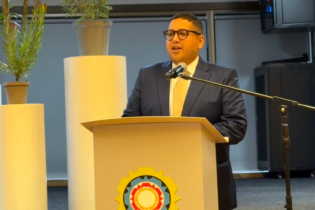IMESA sees itself as playing an extremely important supportive role in assisting municipalities to meet their obligations and reach their service delivery goals.
An eThekwini case study Frank Stevens, vice president of IMESA (operations), presented a paper entitled The Role of the Municipal Engineer and IMESA at the recently held Public-Private Infrastructure Forum (hosted by 3S Media).He commenced by remarking that much of what he was about to say would blend in well with the points made throughout the paper presented by Mfezeko Gwazube on behalf of the Minister of Public Works. The structure of his paper was outlined as:- a description of a water and sanitation undertaking in a typical large city
- first world projects
- serving rural areas
- serving informal areas
- IMESA’s role and where it can assist in meeting the many challenges faced by municipal engineers.
Many unique problems exist in EWS rural areas. The lack of water-borne sanitation as well as the topography and unfavourable geology has resulted in the need to erect hundreds of thousands of double-pit dry toilets and low-pressure ground tanks for water supply. The use of pairs of modified containers for ablution blocks in its 350-plus informal areas has proved to be a solution to a situation that posed a serious health risk. Explaining the urgency of the timeous construction of the Spring Grove and Umkomaas dams, Stevens explained the importance of close liaison and teamwork, for example working with Umgeni Water (EWS’s bulk supplier), the Department of Water Affairs (DWA) and at councillor level. Reference was also made to the many opportunities for public-private partnerships – the recycling plant at EWS’s Southern WWTW, which produces up to 40 Mℓ of industrial water, was cited as a good example.
IMESA’s role Referring to Allyson Lawless’s book Numbers and Needs in Local Government, the serious shortage of skills in South Africa’s municipalities, especially at engineer, technologist, technician and artisan level, was briefly dwelled upon. This led up to the important role that IMESA can play. IMESA has a membership of just over 1 100 municipal engineers, technologist and technicians and many of its members are consultants and contractors. It consists of nine branches throughout the country and is overseen by its president (Jannie Pietersen), two vice presidents, executive committee, council and a team of directors. IMESA’s recently opened national office is based in Westville and is staffed by five people. Branch meetings are held quarterly and this year’s conference will be held in George (24 to 26 October 2012) and is expected to attract at least 1 000 delegates. IMESA serves on the board of the International Federation of Municipal Engineers and has recently formed a close working relationship with the South African Local Government Association (SALGA). Realising the importance of asset management to municipal engineers, IMESA made the introduction and distribution of The International Infrastructure Management Manual throughout the country one of its highly successful flagship projects. Extensive asset management training is ongoing nationally. Another notable project includes the IMESA/DWA Drinking Water Initiative, which won an International Water Association Award and was the basis for the DWA’s Blue Drop/Green Drop system. A SALGA/IMESA Masterclass initiative is presently being rolled-out nationally and is designed to assist municipalities to achieve and retain their DWA Blue and Green Drops statuses. A number of CPD-accredited training courses, including one in project management, are offered by IMESA.






